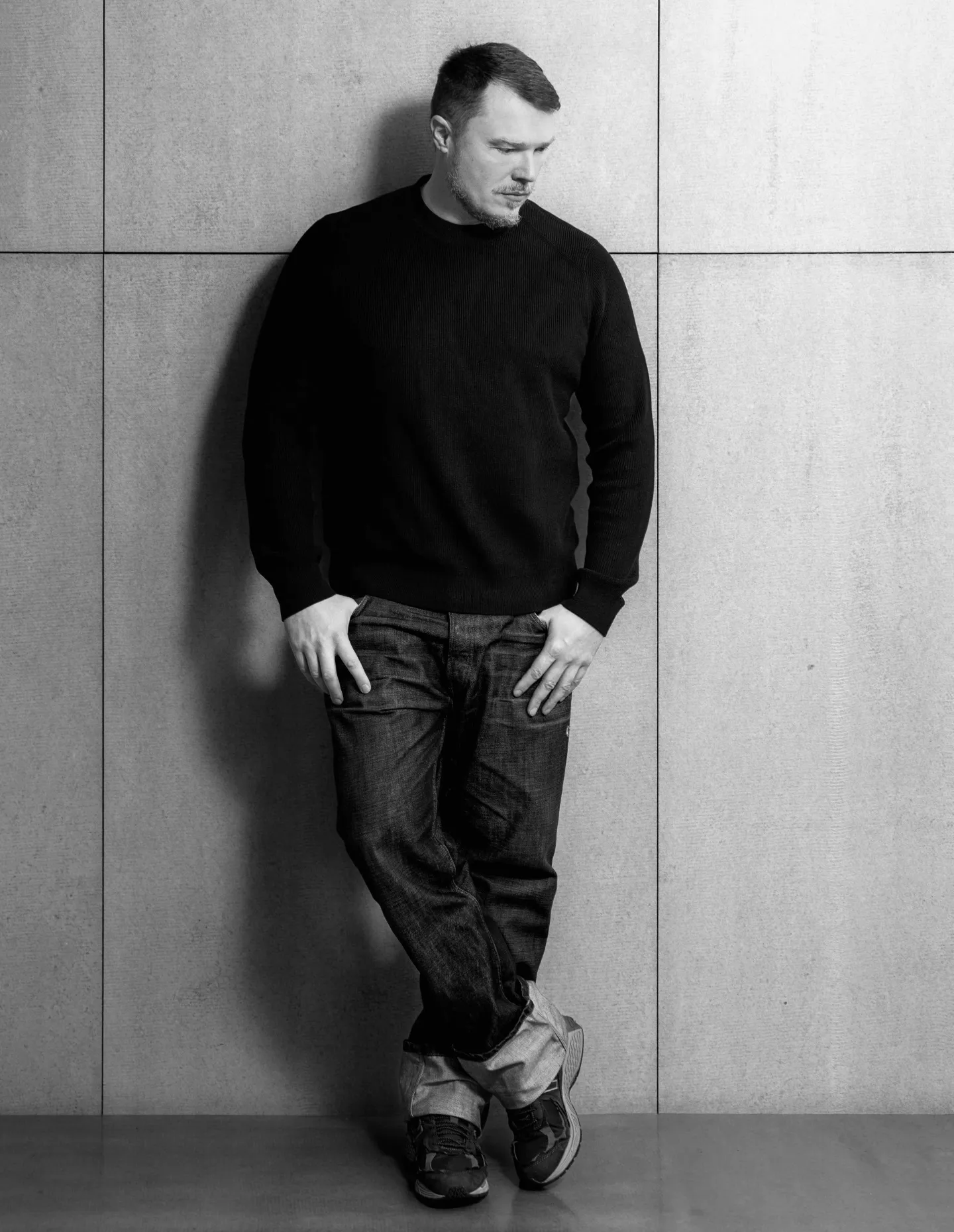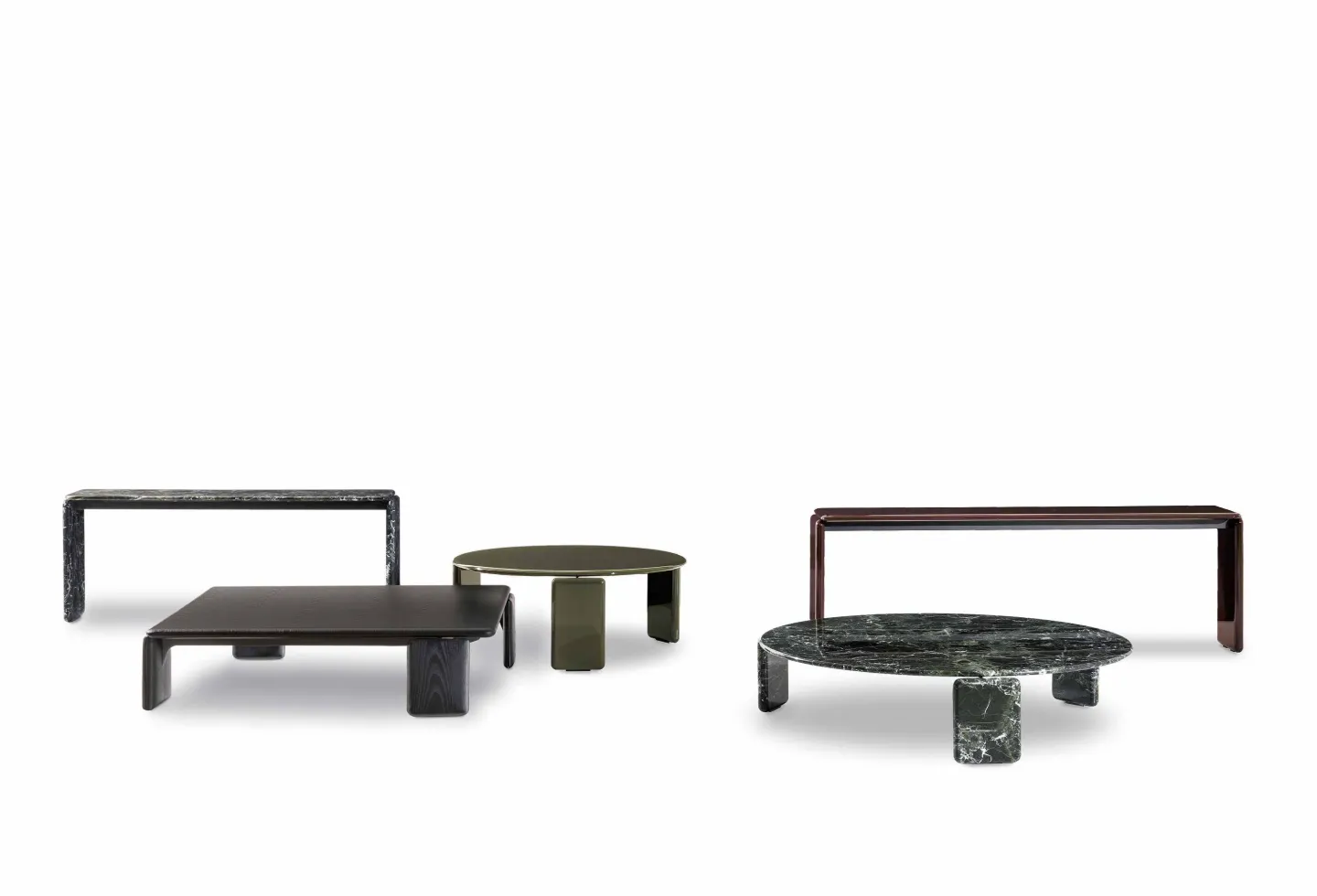“I started as an architect. I design everything as an architect,” Hannes Peer begins – a statement that resonates deeply in his collaboration with Minotti, now at the third generation. The collaboration between Hannes Peer and Minotti is more than serendipitous; the partnership has brought forth a mutual tendency towards perfection and the placing of herculean importance on family.
Just like the dexterous team at Minotti, Hannes Peer and his eponymous practice approach their work in a distinct manner. They focus on how single objects speak to one another, then how they converse with the architecture around them. “At the beginning, when you design something, you don’t necessarily think of the object in itself because it becomes so preferential to do so,” Peer shares. “Over time, I realised why certain concepts were taken further and produced as part of the collection, while some designs were dismissed,” he adds, keeping in mind that the final product is made by Minotti.
Collaboration, however, rarely arrives fully formed. “Obviously not everything we proposed at first was welcomed or well-received” he explains. The impetus for Peer to learn, trust and understand the efforts behind Minotti’s daily operations derived from his experience working in close proximity with the esteemed brand. “I learnt how to respect the way they work and only a month after I understood why certain designs I had proposed [were not feasible],” he says. “With Minotti, there is a lot of experimentation.”

Peer likens the process to stepping into a Renaissance bottega. “You would walk into their [atelier] and see about 20 people – ten engineers among them – working in real-time. If I suggested a modification, they would start designing one-to-one detail right there beside me,” he recounts. For Peer, accustomed to traditional prototyping constraints, the sheer lack of a budget ceiling was transformative: “For a designer, that is mind-blowing.”
For a design to be sustainable and to have the longevity of a coveted item, Peer believes the designer needs to look into the past while looking into the future. “That is what I’m striving to do,” shares Peer. “To design something for today, tomorrow and the future.” This partnership is as much about legacy as it is about the future. “To design something truly sustainable, you need to look back even as you look forward.” With 2025 already in motion, he sees the work not as a static achievement but an evolving dialogue.
“I’m proud of this collaboration and the outcome – it is impressive. We were [only] supposed to design a modular sofa,” which Peer describes as already a herculean task with an established brand, as well as being a massive honour. However, the partnership resulted in 22 design pieces that were presented at Salone.
Related: Álvaro Siza and the fundamental dialogue between architecture and furniture

“We have a saying at Minotti now – it’s about imperfect perfection or perfect imperfection,” he shares. It is the perfection of Minotti, amalgamated with the theoretical concept of imperfection brought by Hannes Peer himself. Peer brought a fresh fervour by introducing concepts to Minotti which “they were never there to explore,” recounting the idea of softness to the brand, for example. While the furnishings themselves have always been plush, they appeared architectural and rigid but Peer introduced a plushness and malleability that was arguably not seen in the Minotti oeuvre prior. Take the Emmi armchair: with its folds and soft leather, it suggests an embrace and homage to Peer’s grandmother, through its intention and apt name. Still, its downy simplicity belies the gruelling 15 prototypes required to refine it.
Peer might describe how “perfection can sometimes be monotonous,” but it was the catalyst to propel him “into wanting to introduce editorial, sculptural pieces.” The Nico table is a prime example, a decade-long rumination brought to life. “I was working on the Nico table for quite some time within my head – I wanted to reduce the form and make it minimalist, without [compromising] on the sculptural sensibilities,” Peer explains. He describes its base as a subtle nod to Michelangelo’s Creation of Adam, where the legs kiss delicately.
“If you look closely, you don’t understand it straightway,” says Peer. Beneath its marble and wood exterior lies an intricate metal core. “It has an inner structure of metal that holds everything together. The marble and wood, operating in a sandwich system, surround the metal structure. It touches in a two-to-three-millimetre radius,” explains Peer. “You have to think of it like painting – you keep going back over it, knowing there’s always a compromise. Collaboration is a dance between creativity and practicality,” he says.

When asked about the patience he may have developed from the experience, Peer didn’t shy away from laconically stating that it was paramount for him to adopt such a characteristic in this setting. However, what enticed Peer most was the perseverance and tenacity required to achieve the level of perfection Minotti embodies.
“I really took a bath in humility,” Peer says in a wry manner. “The learning curve was insane. I now design furniture in a totally different manner to what I would have a few years ago, prior to this wonderful collaboration.” And yet, Peer remains grounded: “In this industry, you’re taught to have an ego merely to survive.” The distinction between ego as a driver versus ego as hubris is a fine one, but Peer draws it with clarity. “One should never compare; focus solely on your work. A bit of ego fuels the drive – there is no ambition without it.”
In the Hannes Peer studio, the “relatively small practice” executes designs from master planning to what some might consider minute details. As Gio Ponti puts it: from “the spoon to the skyscraper.” Hannes Peer and his fastidious team are “interested in all levels, in what the pertinence is for the design object,” he explains. “It’s not chaotic; it’s precise.” Concluding our revelatory conversation, Peer reflects, “but precision takes time. Now the ball is rolling, and we are already preparing for 2025.”
Minotti is available exclusively in Australia through dedece.














